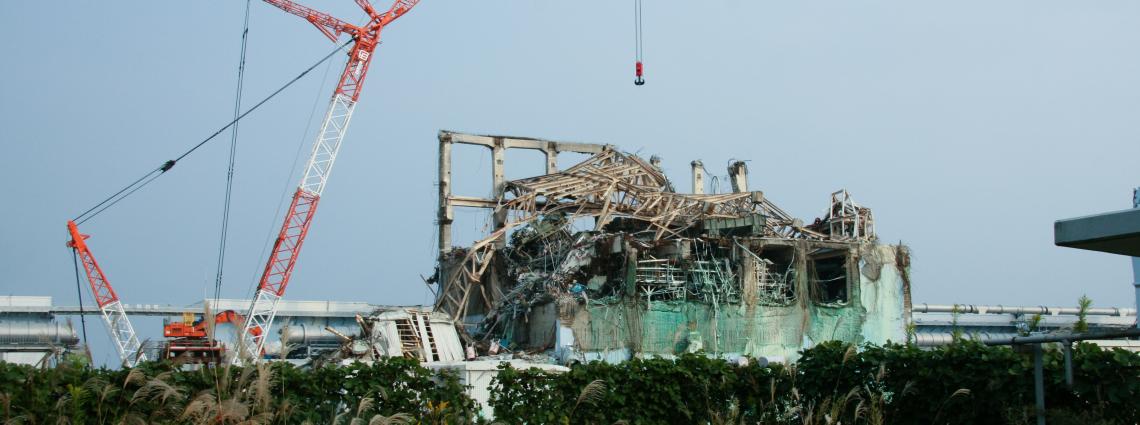Nuclear Emergency Response
Part of the global nuclear emergency response framework
The CTBTO is a member of the Inter-Agency Committee on Radiological and Nuclear Emergencies (IACRNE), a network that facilitates and coordinates cooperation between relevant international organizations to respond effectively in the event of an emergency such as a nuclear accident in which radioactive materials are released.
IACRNE members develop, maintain and co-sponsor the Joint Radiation Emergency Management Plan of the International Organizations, commonly known as the Joint Plan or JPlan, which sets out a framework for emergency preparedness and response to support and underpin national emergency efforts.
Under the Joint Plan, data from the CTBTO’s unique, worldwide radionuclide monitoring network can help form a picture of global and local radiological conditions, both through actual readings and using atmospheric transport modelling, the method by which the travel path of a given radionuclide is calculated using meteorological data, to predict the movement of radioactive particles and gases released in an accident.
Coordinated by the International Atomic Energy Agency (IAEA), IACRNE was originally set up in the aftermath of the 1986 accident at the Chernobyl nuclear power plant. The CTBTO formally joined IACRNE in 2012 after the Fukushima emergency the previous year, when it shared atmospheric radionuclide data and analysis to help to map the radioactive plume from the crippled Daiichi nuclear power plant.
The contribution proved its worth in an emergency, helping the IAEA, the World Health Organization (WHO) and other agencies to track and monitor radiation and provide accurate information to the public on health issues.
Based on IACRNE, the CTBTO has also signed a practical arrangement with the IAEA to cement cooperation between the two Vienna-based organizations.
CTBTO’s role in the Fukushima emergency
On 11 March 2011 a massive earthquake and tsunami struck northeastern Japan and critically damaged the Fukushima Daiichi nuclear power plant. The next day, about 200 km away, the Takasaki radionuclide monitoring station in Japan started picking up radioactive particles such as iodine-131 and caesium-137, and the radioactive noble gas xenon-133, emitted by the crippled plant.
The radioactive plume was then detected by an increasing number of IMS stations as it travelled across the northern hemisphere and later around the entire globe. By 14 March radioactive isotopes were detected in eastern Russia; two days later they had reached the west coast of the United States. From there the plume crossed North America, and was picked up at a station in Iceland 12 days after the accident.
By Day 15, traces from the accident were detectable all across the northern hemisphere. For the first four weeks, the radioactive materials remained confined to the northern hemisphere, with the equator initially acting as a dividing line between the northern and southern air masses. As of 13 April 2011, radioactivity had spread to the southern hemisphere of the Asia-Pacific region and had been detected at stations located for example in Australia, Fiji, Malaysia and Papua New Guinea.
Looking at the ratios between the various radioactive isotopes – in particular caesium-134 and caesium-137 – it was possible to identify the emissions as radionuclide releases from a damaged nuclear power plant, consistent with the accident at Fukushima Daiichi.
While the levels detected were far below those that would impact human health, the International Monitoring System (IMS) demonstrated its ability to track radiation from nuclear accidents quickly and accurately, and to predict dispersion correctly using atmospheric transport modelling.
The CTBTO's radionuclide stations are designed to register minuscule amounts of radioactive particles and noble gases – down to just a few atoms. The system’s sensitivity is second to none, able to detect a concentration of 0.1 g of radioactive xenon evenly distributed within the entire atmosphere of the Earth.
On the basis of these data, CTBTO Member States were able to provide reliable information to concerned populations. The Fukushima accident also led to intensified cooperation between the CTBTO and other relevant international organizations such as the IAEA, the WHO and the World Meteorological Organization (WMO), and its formal entry to IACRNE.
